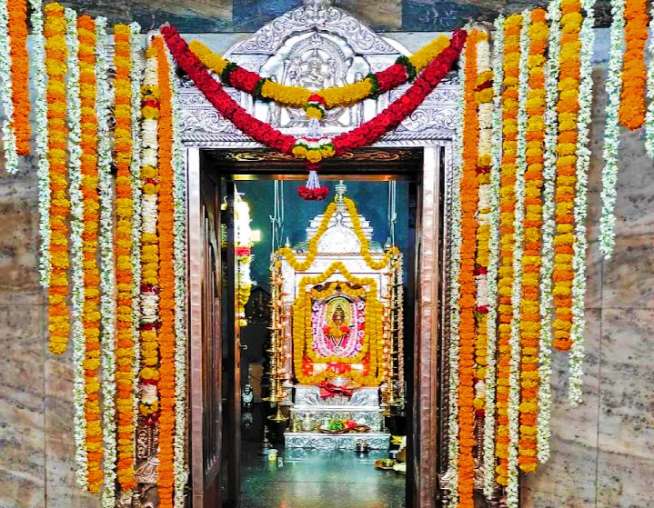
The Shree Mahalaxmi Temple in Panaji (Panjim), Goa, is one of the oldest and most revered Hindu temples in the region, dedicated to Goddess Mahalaxmi—the deity of wealth, prosperity, and power. Unlike Goa’s famous churches, this temple represents the enduring Hindu heritage of the state, surviving Portuguese rule and colonial-era religious suppression.
1. Historical Origins & Portuguese Era Challenges
Pre-Portuguese Existence (Before 1510)
- The original temple is believed to have been built before the 15th century, possibly during the Kadamba dynasty (10th–14th century) or the Vijayanagara Empire (14th–16th century).
- Goa was a major Hindu pilgrimage site before Portuguese colonization, with temples dedicated to Shiva, Vishnu, and Devi (Goddess worship).
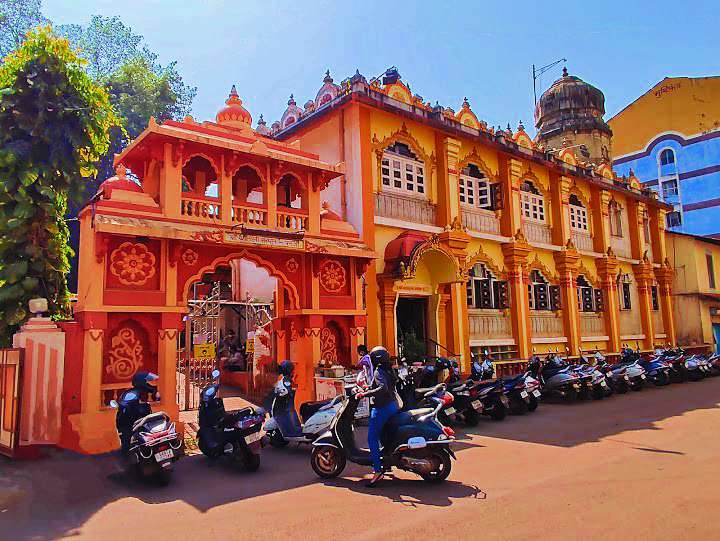
Destruction & Relocation During Portuguese Rule (1510 Onwards)
- After the Portuguese conquest of Goa in 1510, many Hindu temples were destroyed or forcibly converted into churches under the Inquisition (1560–1812).
- The original Mahalaxmi Temple of Colvale (Bardez) was demolished, and the idol was secretly moved by devotees to safe locations.
- The deity was later reinstalled in Panaji (then called “Pangim”) in the 18th century, as Portuguese religious persecution eased slightly.
Rebuilding in Panaji (19th Century)
- The current temple structure in Panaji was reconstructed around the 1800s, when Hindus were allowed limited religious freedom under liberal Portuguese administrators.
- The temple was strategically built near the Ourem Creek (Rua de Ourem) in a quiet area to avoid conflicts with colonial authorities.
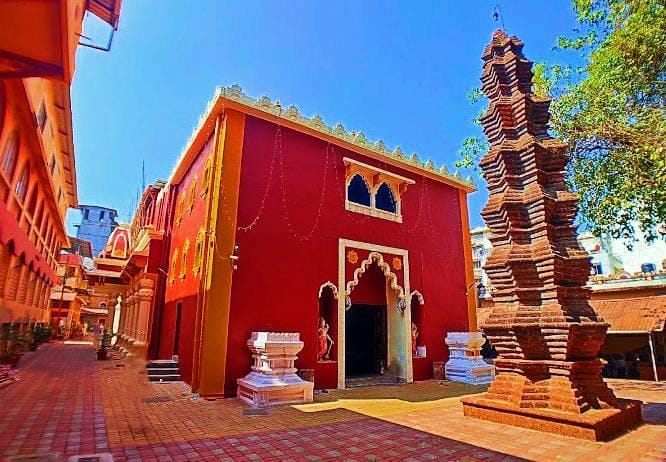
2. Architectural Style & Sacred Features
Temple Structure
- Built in traditional Goan Hindu temple architecture, blending Konkani and Maratha styles.
- Unlike grand South Indian temples, it has a simpler, dome-shaped sanctum (garbhagriha) and a modest Sabha Mandap (prayer hall).
- The deepstambha (lamp tower) is a notable feature, lit during festivals.
Deity & Idol
- The main idol is Goddess Mahalaxmi, depicted in a golden-hued, four-armed form, holding a lotus, mace, pot of gold, and blessings (Abhaya Mudra).
- The idol is believed to be Swayambhu (self-manifested) and radiates strong spiritual energy.
Other Shrines
- Subsidiary deities include Lord Ganesha, Lord Hanuman, and Navagrahas (nine planetary deities).
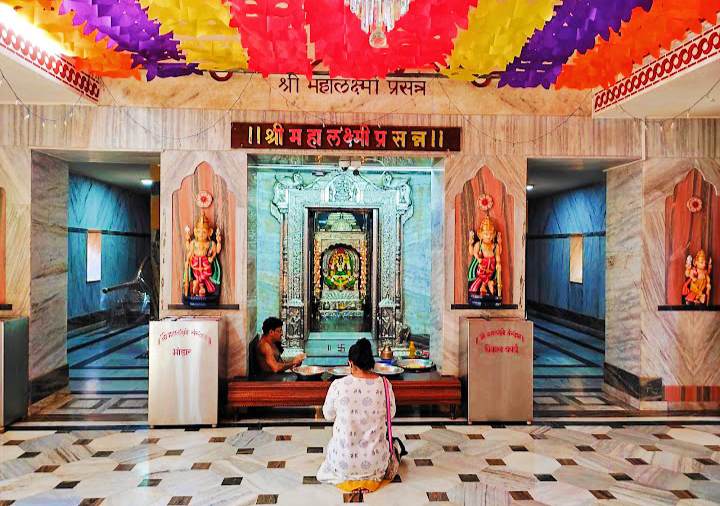
3. Religious Significance & Festivals
Daily Worship & Rituals
- Morning & evening aarti with Vedic chants.
- Special abhishekams (ritual baths) with milk, honey, and flowers on Fridays.
Major Festivals
- Navaratri (September/October) – The biggest festival, with 9 nights of worship, music, and cultural performances.
- Diwali Lakshmi Puja – Grand celebrations with oil lamps and offerings for prosperity.
- Gudi Padwa (Marathi New Year) – Temple is decorated, and prasad is distributed.
- Akshaya Tritiya – Special pujas for wealth and success.
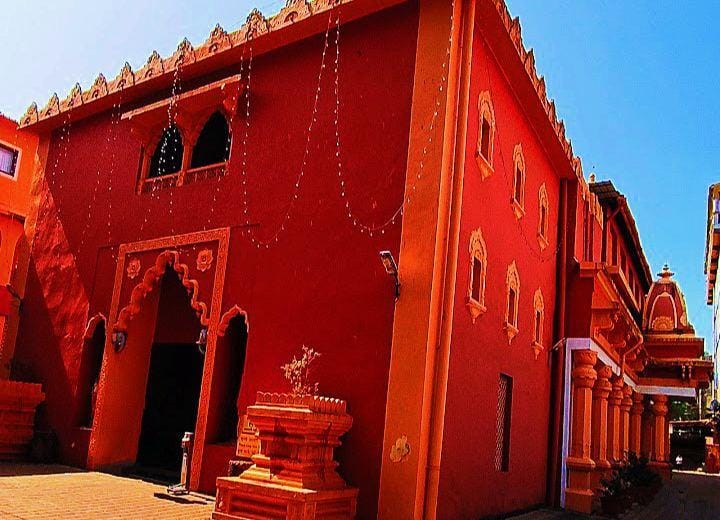
4. Cultural Survival & Legacy
Resistance Against Portuguese Suppression
- Unlike many Goan temples that were destroyed, the Mahalaxmi Temple survived due to the resilience of Hindu devotees who secretly preserved traditions.
- After Goa’s liberation in 1961, the temple gained more prominence as a symbol of Hindu revival in the state.
Modern-Day Importance
- A key pilgrimage site for Goan Hindus and tourists.
- Plays a role in preserving Konkani Hindu traditions alongside Goa’s Christian heritage.
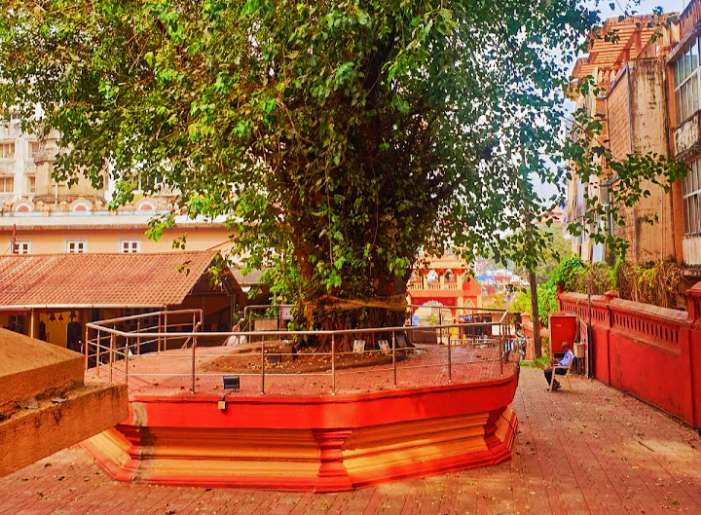
5. Visiting the Temple – Practical Information
- Location: Near Ourem Creek, Altinho, Panaji (easily accessible from the city center).
- Best Time to Visit: Early morning or during festivals.
- Dress Code: Modest clothing (avoid shorts/sleeveless).
- Photography: Restricted inside the sanctum.
Conclusion
The Shree Mahalaxmi Temple in Panaji is not just a place of worship but a testament to Goa’s resilient Hindu identity, surviving centuries of colonial rule. Its rich history, spiritual aura, and cultural significance make it a must-visit for devotees and history enthusiasts alike.










Add comment